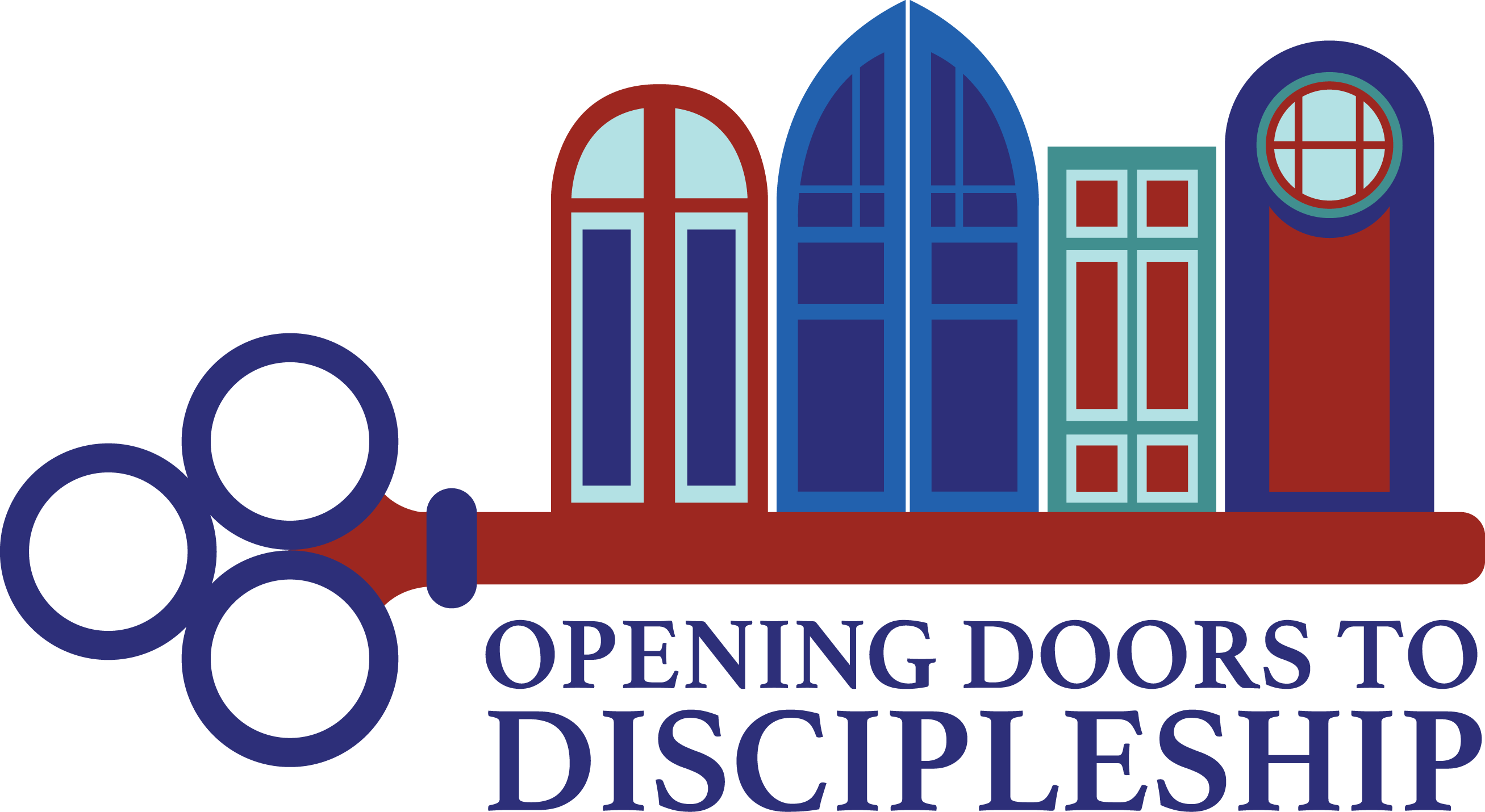Engaging this module
You are invited to explore this module by reading the content, watching the presentations and videos and responding to the suggested exercises and activities. You are encouraged to have a Bible and journaling materials nearby to take notes.
Who is Jesus?
Watch this video to hear fellow Christian Educators and faith formation leaders talk about where they encounter Jesus.
REFLECTION
- What is your earliest memory of having an image of Jesus in your mind? Maybe it comes from a story, a song, a prayer, a time of worship. What might that early picture tell you about who you perceived Jesus to be?
- How has your image of Jesus changed over time?
- Who is Jesus Christ to you now? Jot down 5-10 descriptive words that together create an image, or draw or paint a picture that shows who Jesus is to you.
ACTIVITY
Read the “I am” statements below. What picture do you get of Jesus? Which “I am” statement helps you best understand Jesus as fully divine? Which one expands your understanding of who Jesus is?
John 6:35: “I am the bread of life. Whoever comes to me will never be hungry, and whoever believes in me will never be thirsty.”
John 8:12: “I am the light of the world. Whoever follows me will never walk in darkness but will have the light of life.”
John 10:7-8: “Very truly, I tell you, I am the gate for the sheep. All who came before me are thieves and bandits; but the sheep did not listen to them.”
John 10:11: “I am the good shepherd. The good shepherd lays down his life for the sheep.”
John 11:25: “I am the resurrection and the life. Those who believe in me, even though they die, will live,”
John 14:6: “I am the way, and the truth, and the life. No one comes to the Father except through me.”
John 15:5: “I am the vine, you are the branches. Those who abide in me and I in them bear much fruit, because apart from me you can do nothing.”

ACTIVITY
If you want to dig deeper, find a good Bible dictionary, such as the HarperCollins Bible Dictionary, Revised and Updated Edition. Look up any of the terms found in this section to learn more about these theological concepts. How do these terms help you understand Jesus as fully divine?
JESUS IS FULLY HUMAN
This presentation will discuss Jesus as fully human. If you would like to read along with the presentation, please click on the button below to download the transcript.
JESUS IS FULLY DIVINE
This presentation will discuss Jesus as fully divine. If you would like to read along with the presentation, please click on the button below to download the transcript.
EXCERPT FROM
A BRIEF STATEMENT OF FAITH
We trust in Jesus Christ,
Fully human, fully God.
Jesus proclaimed the reign of God:
preaching good news to the poor
and release to the captives,
teaching by word and deed
and blessing the children,
healing the sick
and binding up the brokenhearted,
eating with outcasts,
forgiving sinners,
and calling all to repent and believe the gospel.
Unjustly condemned for blasphemy and sedition,
Jesus was crucified,
suffering the depths of human pain
and giving his life for the sins of the world.
God raised this Jesus from the dead,
vindicating his sinless life,
breaking the power of sin and evil,
delivering us from death to life eternal.[1]
[1] https://www.presbyterianmission.org/what-we-believe/brief-statement-of-faith/
ACTIVITY
Read again the excerpt from A Brief Statement of Faith or choose a creed that your denomination uses. Make a list of the things Jesus said and did that are included in that creed. What picture do you get of Jesus from looking at your list?
ACTIVITY
Reflect on these two questions:
-
- Where do you encounter Christ?”
- “How do you know what Jesus would have you do in your day-to-day life?”
Contact a few people of different ages in your congregation and ask them the same two questions. How do their answers help guide your ministry in your congregation?
WHO IS JESUS CHRIST TO THE CHURCH AND THE CHURCH TO HIM?
This presentation will explore Jesus’ relationship to the church and the church’s relationship to Jesus. If you would like to read along with the presentation, please click on the button below to download the transcript.
WHO JESUS IS NOT
Jesus is not just my personal friend.
Jesus Christ came to seek and save the lost. He calls you by name and loves you unconditionally. However, to call Jesus only our personal friend limits our understanding of the fully human and fully divine Christ. Jesus is the eternal Son of God, our Messiah, Savior, and King. Jesus Christ is head of the church, the body of Christ, so the Christian faith is a communal faith. We can have a personal relationship with God through Christ, but we are also called to relationship with other Christians through the church. Christianity is not a “me and Jesus” faith. Jesus is so much more than just our personal friend. He is Emmanuel, God with us.
Jesus is not still on the cross.
Crosses are everywhere. They hang in churches, circle our neck as jewelry, and display on walls in homes. They can be made of wood, clay, broken glass, silver, gold, nails, or a variety of other materials. Sometimes, you see a man, presumably Jesus, hanging on the cross, but you won’t see that in a Reformed church. The crucifixion and the resurrection are inextricably linked together. We worship a crucified AND risen Christ, the one who defeated sin and death. The gospel writers include several stories of people’s encounters with the risen Christ. “Christian faith is faith in the risen Christ.”[[1] Jesus is no longer on the cross. He is risen! Alleluia! Thanks be to God.
[1] Guthrie, Shirley C. Christian Doctrine, Revised Edition. Westminster John Knox Press. Louisville, KY: 1994. Pg. 272.
Jesus is not a genie in a bottle, able to grant our every wish.
No, Jesus is not just a genie in a bottle, granting our every wish. Jesus is much more. Jesus is God incarnate, God-with-us. He came to earth to experience human life, teach and model for us how to love God and neighbor, save us from sin and death and give us life eternal. When Jesus performed miracles, he did so not to grant wishes but to show God’s power. The desires we express in our prayers matter, but the purpose of prayer is not to ask for and get what we want and think we need. Frequently, we do not know God’s will or understand God’s plans. What we can know is this: In Jesus Christ, God loves us unconditionally and will never leave us or let us go, no matter what we do. That is so much better than having a genie!
In communion, the elements are not literally the body and blood of Jesus.
Paul tells us in First Corinthians 11: 23b-26 that, “the Lord Jesus on the night when he was betrayed took a loaf of bread, and when he had given thanks, he broke it and said, ‘This is my body that is for you. Do this in remembrance of me.’ In the same way he took the cup also, after supper, saying, ‘This cup is the new covenant in my blood. Do this, as often as you drink it, in remembrance of me.’ For as often as you eat this bread and drink the cup, you proclaim the Lord’s death until he comes.” The Reformed Church teaches that these elements are the sign and seal of our covenantal relationship with the crucified and risen Christ, rather than the actual, physical body and blood of Christ. These symbols of God’s love and grace remind us of God’s call to live lives of discipleship. “Through the Lord’s Supper, Jesus Christ nourishes us in righteousness, faithfulness, and discipleship. Through the Lord’s Supper, the Holy Spirit renews the Church in its identity and sends the Church to mission in the world.”[1] We don’t have to understand exactly how it happens to participate in this sacrament. The table is set; the invitation is given to come with a faithful and repentant heart to receive God’s gift of grace.
[1] Book of Order, 2019-2023. Office of General Assembly. Louisville, KY: 2019. W-3.0409.
The table is a communion table, not an altar.
In the Old Testament, the people of God sacrificed animals on an altar to atone for their sins. When Jesus Christ came to live on earth, was crucified, and raised from the dead by God, there was no further need for sacrificing animals to God. The writer of Hebrews 10:14-18 says:
For by a single offering he (Jesus) has perfected for all time those who are sanctified. And the Holy Spirit also testifies to us, for after saying,
“This is the covenant that I will make with them
after those days, says the Lord:
I will put my laws in their hearts,
and I will write them on their minds,”
[Jesus] also adds,
“I will remember their sins and their lawless deeds no more.”
Where there is forgiveness of these, there is no longer any offering for sin.
Therefore, in a Reformed church, we have a table for the Lord’s Supper, communion, not an altar for sin sacrifices. We come as repentant people, invited by Christ to join him at the table of grace.
Reformed Christians celebrate only two sacraments.
Different Christian denominations have a different number of special acts they call sacraments. Reformed churches recognize two sacraments, Baptism and the Lord’s Supper. Both are things Jesus did while here on earth and told his disciples to do. In these sacraments, we meet the risen Christ, receive God’s gift of grace, and are sent out to live as disciples, helping to bring the kingdom of God here on earth.
CLOSING REFLECTION QUESTIONS
- What difference does it make that Jesus lived as a human being on earth? What difference does it make that Jesus is God’s son, and therefore divine? What does it mean to you to claim Jesus was fully human and fully divine?
- How might this exploration of who Jesus is shape your life of discipleship? Where do you encounter Jesus most fully?
- Go back to your answer to #3 in the Engage activities at the beginning of this module. How, if at all, has your understanding of who Jesus is changed after participating in this study?
